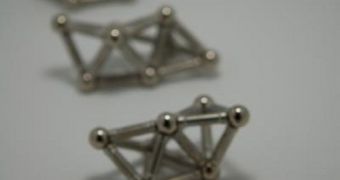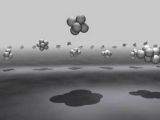One of the basic properties of matter, and the thing that arguably made life on Earth possible, is the fact that its atoms and molecules tend to come together, and structure themselves in various patterns. However, despite all odds, these patterns are not always symmetrical, as one could expect. In fact, at times, entropy dictates the formation of less symmetrical, more complex, and more flexible structures. Unlocking the mysteries behind why this happens may lead to the creation of new materials, as nature is the major source of inspiration for science.
Vinothan Manoharan and Michael Brenner are two experts that recently led a team of Harvard University researchers in figuring out more data on why these peculiar patterns emerged in nature. The results of their investigation appear in the January 29 issue of the top journal Science. The group found that the key player in this self-assembly process was entropy, the measure used to quantify the amount of disorder within a certain system. The scientists were able to figure this out by using magnetic toys of the “stick and ball” variety, which are widely popular with children.
Manoharan and his team used colloidal particles for this research. These particles are part of suspended chemical mixtures, similar to the ones found in semi-solids such as mayonnaise. This was done in order to simulate the behavior of atoms and molecules, in terms of how they clustered together. Manoharan is an associate professor of chemical engineering and physics at the Harvard School of Engineering and Applied Science (SEAS), as well as in the university's Department of Physics.
“To allow clusters to form, we put a few tiny polystyrene spheres in microscopic cylindrical wells filled with water. The particles act as 'sticky' hard spheres and naturally cluster together just like groups of nearby interacting atoms and molecules do,” the scientist says of the experimental setup the group used. The investigators studied groups of six particles especially. These elements can form into shapes including a basic octahedron, or a more complex tri-tetrahedron. Given the fact that both structures had the same potential energy (each had 12 bonds), the researchers expected them to appear in comparable proportions inside the mixture.
However, it was revealed that the more complex structure appeared 20 times more often than its simpler counterpart, giving new credence to theories about how complexity emerged from simplicity. “The only possible explanation was entropy. Most people are familiar with entropy as a measure of 'disorder,' but the most useful definition of entropy is simply the number of different ways a bunch of particles can arrange themselves,” Manoharan adds. “Our findings illustrate, in a tangible way, what the concept of entropy means,” he concludes.

 14 DAY TRIAL //
14 DAY TRIAL // 
